#south african queer pride
Text
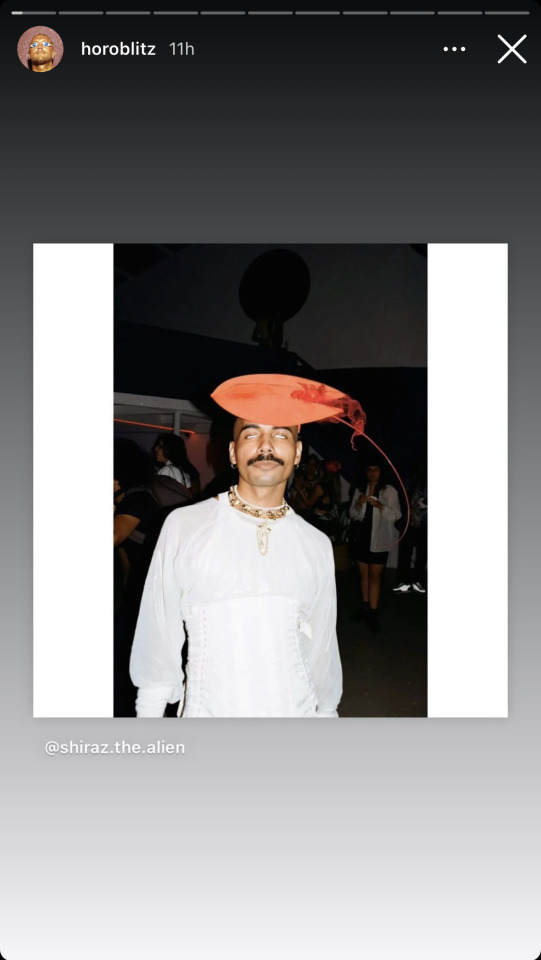
#ig: shiraz.the.alien#shiraz.the.alien#instagram stories#instagram#queer art#queer south africa#south african creatives#south african queer pride#south african queer youth#queer people of color#queer person of colour#non binary#nonbinary#gender fluid#gender queer#lgbt#lgbt art#photography#cape town#cape town queerness#coloured community#queer is beautiful
2 notes
·
View notes
Photo
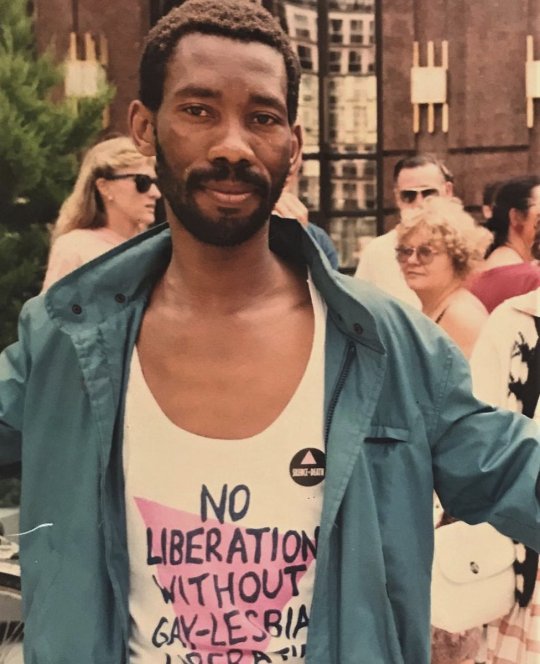
Black History Month: Simon Nkoli
“I am black, and I am gay. I cannot separate the two parts of me into secondary and primary struggle. They will all be one struggle.”
Simon Nkoli was born in the late 1950s in the Black township of Soweto in South Africa. He grew up under apartheid, and first became involved with anti-apartheid activism as a student, despite negative reactions within the movement to his homosexuality.
In 1984, Simon was arrested along with 21 other men while protesting rent increases in the township of Delmas, a group which became known as the Delmas 22. While in prison awaiting trial, Simon was outed, and faced backlash from the rest of the group, many who feared that pulic knowledge of his sexuality would negatively impact the outcome of the trial. To the surprise of his co-accused, Simon received an outpouring of support from the international queer community, which in turn led to greater international support for the Delmas 22 and anti-apartheid work.
Simon was ultimately acquitted, and began work as a founding member of a new group, GLOW - the Gay and Lesbian Organisation of Witwatersrand - fighting for the rights of queer people in Johannesburg’s Black townships. Simon was diagnosed with HIV while in prison, and focussed especially on HIV/AIDS activism in Black communities. With GLOW, Simon went on to organise Johannesburg’s first Pride march in 1990.
In 1994, Nelson Mandela became South Africa’s president, marking the end of apartheid. Simon met and negotiated with government officials to ensure the rights of gay and lesbian people would be enshrined in the country’s new constitution - the first country in the world to do so.
Learn more
Image: Simon wearing a shirt with a pink triangle which reads “No liberation without gay-lesbian liberation”, and a pin reading “Silence=Death”
#simon nkoli#black history#south african history#african history#queer history#aids#gay history#lgbt history#lgbtq#pride#black history month
2K notes
·
View notes
Text
Hi in case you don't know, here in South Africa we've been warned of a possible terrorist attack on the 29th of October. This is also the day that were having our 33rd annual pride. Which, how absolutely coincidentally, is taking place at the location wherein the alleged terrorist attacks have been warned to be.
Source
Source
This is still a developing story, and things may change and be brought to light, but at the moment, here's just a heads up
5 notes
·
View notes
Text
HAPPY PRIDE MONTH MTHERFCKERRRRSSSSSSSSS
#whoooo#happy pride 🌈#time to be extra gay TODAYY#ohohohoh#an extra happy pride month for blk queer people i love yall sosososo much (*꒦ິ꒳꒦ີ)#an extra happy pride to disabled queer people i love yall!!#an extra happy pride to zimbabwean#south african#jamaican#nigerian#ghanaian#and indigenous queer people ♡^▽^♡#happy pride month i love yall (◕‿◕)♡
6 notes
·
View notes
Text
Meeting with the Renlunds
I met with Elder Kevin Hamilton and he offered to walk me over to Elder Renlund's office for my next appointment as it would help me get through security more easily.
Elder Hamilton greeted the secretary and explained he found me wandering around and helped me find where I was going.😄 Then he said that we became friends when he did a stake conference in Florida and I have a standing invitation to visit every time I'm in Utah.
At that moment, Elder Renlund steps out of his office door and proclaims, "I trump that invitation. He gets to see ME when he's in town." 😁
It was a humorous way to be handed off from the one to the other.
—————————
Elder Renlund asked if I was in town for that conference in Provo (the Gather Conference)? Y'all, I was impressed that he knew about it! Great credit to the conference organizers!
—————————
I reminded the Renlunds that the last time I visited, they gave me a book they co-wrote. When I saw it was about the Melchizedek Priesthood, I was like "Go Ruth!" There's no reason a woman shouldn't write about the priesthood.
This time I brought them a gift, a copy of a book which contains a chapter I wrote.
Me: I'm a little nervous giving it to you because I wrote it from my viewpoint. I was very honest and that means not everything matches the Church's view. Some things about church are hard for me.
Dale: We will read this.
Me: Now I'm even more nervous!
Ruth: Don't be nervous. You shouldn't be nervous about telling the truth.
Dale: They're your thoughts and perspectives.
Ruth: Others have done the same, why not you?
Whew, I felt much better after that exchange.
I also shared that writing my chapter led me to realize I may have an eating disorder, and how that led to an official diagnosis and now I'm in therapy. I'm on a journey to better mental and physical health. They were genuinely interested in this development and kind in their support.
—————————
Elder Renlund mentioned that when he presides over a meeting and opens things up for questions, it's not unusual for LGBTQ topics to come up. As we spoke, the Pride flag got mentioned.
I shared a conversation I had with my friend who recently retired from a 20-year career with the U.S. military. My friend doesn't wear a US flag pin at church. He is there for religion, not patriotism. Anyone who wants to know if he is patriotic should look at his life. Plus, America does some things that aren't compatible with what Jesus taught. My friend wants to keep the two separate.
When it comes to the Pride flag, I feel a little different. No one questions whether Americans are welcome at church. We don't have a history of harsh teachings against Americans. We need to be intentional in signaling that we welcome LGBTQ+ people.
The Pride flag represents queer people and it goes where they go, which means it is there when people fight for Civil Rights or run their business, and however they live their life. This causes some to see the flag as representing things they don't like because some queer people make choices they don't agree with. I think when the average member displays the Pride flag, they are indicating that queer people are welcome and wanted, that they are a safe person to talk with. But for a leader, some will see his wearing the flag as endorsing all the things people associate with it.
Elder Renlund responded that it's like Black Lives Matter. Of course Black lives matter, but the political movement that grew up around that phrase can be seen by some as controversial, so if a leader displays a Black Lives Matter flag people may question or assume he supports all of it.
He went on to say that he appreciates my friend's position because when they lived in South Africa, a friend of his said, "We South Africans don't like Americans telling us what to do." What registered with Elder Renlund is if what his friend sees is an American, then he needs to change so what his friend sees is a disciple of Christ.
—————————
Elder Renlund asked what else is going on in my life and I shared that I'm now on the Affirmation Board of Directors. It's interesting because I don't seek to do things in the LDS/LGBTQ space, but the Lord provides opportunities and I accept them.
His response was, "You can help others and that's what I think God wants you to do."
—————————
They asked how my parents are doing and I mentioned my mom's calling in her ward.
"Your mom is the Primary chorister?" Elder Renlund shared that he is the chair of the committee putting together the new hymnal. "I think the war in heaven started over a new hymnal. Everybody has an opinion." 🤣
—————————
Ruth and I spoke about a person we're both related to. It's a man who was her uncle, and he was married to my grandma and they had 2 children together. He died in World War II and my grandma remarried and had 2 more children.
My grandmother was sealed to her first husband but spent the bulk of her life with her second husband. When my granddad passed away, he was also sealed to his wife, she is sealed to two husbands.
Elder Renlund said that in life there is an asymmetry, men can be sealed to multiple women but women are limited to being sealed to only one man. However in death, all are equal, everyone can be sealed to all those they were ever married to.
This means we don't have a clear understanding of what it's like in Heaven. Since all three of these people are sealed to each other, and they have promises made to them, no blessing will be denied to them. We don't know how that works, but we are convinced of the promises and see them afar off.
Elder Renlund went on to say those who have "LGBTQ issues" and try to be faithful are heroes and the Lord really will bless them.
I brought up that single people face the same questions about their situation as queer people.
His response was of all those who are single and members of the Church, the majority are not active. He doesn't think God is going to harshly judge them. But he thinks God holds real blessings in store for those who try to be faithful. I thought that was interesting, "try" is enough to qualify.
Elder Renlund says there will be a sorting and figuring out who is sealed to whom, but we don't believe anyone will be forced. All wounds will be healed and injustices made whole, and no blessings withheld from the righteous.
—————————
We had met for nearly an hour and needed to wrap up. Elder Renlund proposed, "Let's get a photo." Sister Renlund commented, "I just came from the hair dresser so this works out well." 😂
As we walked out of the office, Sister Renlund explained that he has to go practice his conference talk using the teleprompter so there isn't much wiggle room for extending our visit. She also joked that you'd think these men would have the use of the teleprompter mastered, but they have to practice before every General Conference. 😆
—————————
It was generous of them to take an hour out of their day to spend it in conversation with me
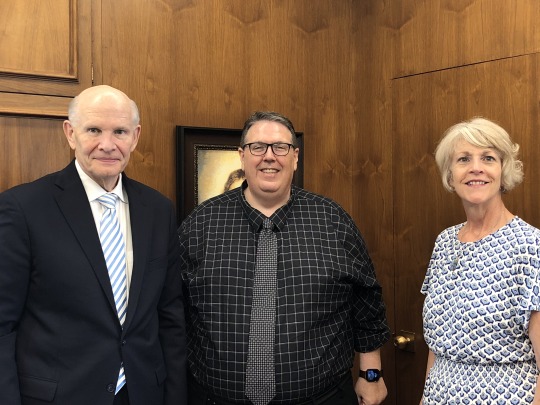
44 notes
·
View notes
Text
October is Pride Month in South Africa. As a queer artist from South Africa, it is important that we strive to share queer narratives in all art forms.
One of the biggest reasons I wrote this book was because growing up I wanted to see someone who looked like me and was like me. Someone who was a person of colour and queer in a world of magic.
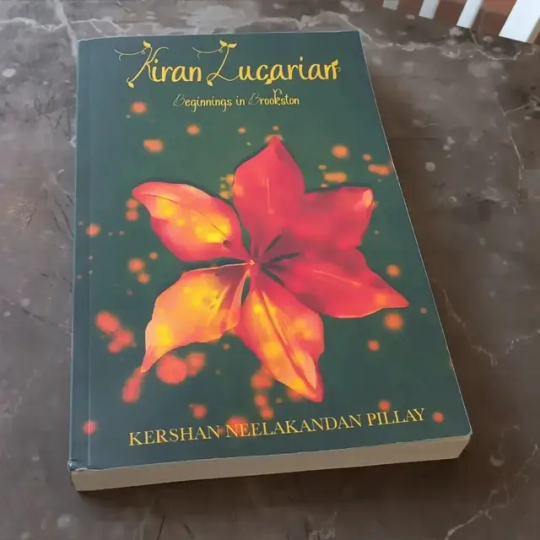
#writers on tumblr#poets on tumblr#my writing#writer#writing#writers#lgbt poc#author#lgbt author#queer#booklr#book#october#pride#lgbt representation#queer representation#representation matters#fantasy novel#fantasy
42 notes
·
View notes
Text
Retelling of overused historical periods (part 1)
There are some historical periods that are so much used in stories to become boring, like, there's no more something interesting about them, right?
Wrong
Lucky (or unfortunately, depends on the point of view) stories tend to focus only on some aspects of history, leaving out all the rest.
But "the rest" is so fascinating!
Here are some prompts on how you can make overused historical times interesting again.
Ancient Rome
Especially last years of Republican period and first century of Imperial period
Tell the stories of women. This is going to be a recurrent advice but here I mean it with all my heart: talk about women, properly. Roman women between I century bc and II century ad had to face a lot and did it with great force and pride: they fought to be educated (and some of them started to work in law), some of them became writers (often uncredited, like Sulpicia), they had to face a law that punished sexual behavior outside of marriage (even for unmarried girls) and fought against them united, they obtained divorce (and divorced women started to be common after I century bc) and in imperial periods they obtained more civil rights. Some historians say that what they did was a feminist movement ante litteram. If you want a nice reality based prompt: when Augustus imposed a law stating that every woman (married and unmarried) that had sex with a person that wasn't her husband would be punished- apart from prostitutes, lots aristocrat women decided to go all together to sing up as prostitutes (even if they weren't) as a protest. They won.
Greek slaves. Romans had different levels of slavery and usually slaves from Greece were classified familia urbana: they had to work in the family of their owner/patron but had greater respect than other kind of slaves. They had to manage the family patrimony, educate the young members of the family (greek culture was fashionable) and help their patron at work. Usually after years of work they became libertus: freed people.
People who decided to put otium (making of art, literature, poetry and philosophy) before negotium (working in law or in commerce). It wasn't a lot encouraged and young people who did so were the "wasted youth" or the unproductive. Culture was seen as good only if it had a second mean like propaganda. Art for art's sake wasn't acceptable, and lots of young people fought for that. If you want a reality based prompt: Catullus and neoteros.
Bisexuality. Lots of historical fictions forget how much bisexuality was common in ancient rome. It wasn't seen as completely good (there were a lot of prejudices) but many of important figures were bisexuals (I'm looking at you, Cesar). Take this as an invite to make queer representation.
Victorian London
Talk about women (this is going to be a leitmotiv) in a different way. On one hand we have the Victorian idea of women (very oppressive) and on the other we have the rise of feminism with its different ramifications. Highlight this opposition and talk about women who had the courage to stand out.
Poor people and working class. Usually Victorian based fiction is about aristocrats or rich borgueis class but poor people had a more interesting story: the protests, police brutality, the rising of socialism, strikes, the first trade unions and the fight to make them legal, chartism and other attempts to be important in politics.
Queer people. Homosexuality (and other queer identities) was forbidden and punished with prison. Still, queer culture in the Victorian England is huge. This aspect can't go forgotten in history and fiction.
Immigrants. According to Wikipedia
there were about 2 339 000 immigrants in Victorian Britain, mostly from Ireland, Belgium, Germany and lots of them were Jews, but there were lots of immigrants from South Asia, China, the African continent and West India too. Telling their stories would be original and much needed.
The Golden Age of Piracy
You know what I'm going to suggest, right? Women! Yeah you saw it coming. Women pirates were a thing and we need to talk about them more often. Lots of them used male names and identities in order to be safe and revealed themselves only later (and often when killing their enemies as a way to state "you've been defeated by a woman, you sexist idiot") . Sometimes they were desperate and looking for a way of surviving that wasn't prostitution but I really hope that their story won't be only filled with trauma and suffering: they were badass, powerful and free. Celebrate them. Anyway, some of them could have been transmen and transmasc people and it's really important to not put a cisheteronormative gaze on them. Queer and trans pirates were a thing as well as women pirates.
Matelogate and queerness in pirates. Matelogate was similar to modern civil unions and stipulated between men: they promised to share everything and had legal (in the law pirates recognized) protection as a couple, and benefits too. Matelogate wasn't exclusively an agreement between lovers but it has been reported that almost all pirates who decided to matelogate had a romantic and/or sexual bond with the people they decided to commit to. I'm saying people because apparently (I still have to do deep researches about it) polyamorous pirates were a thing too.
Black pirates. Seriously, lots of people think that pirates were only white but actually there were plenty of nonwhite pirates and especially black pirates. Usually they chose piracy as a way to escape slavery but as I said with women pirates before: even of history is filled with pain, try to not focus only on trauma and portrait your characters in a non triggering way. Empower them as a way of giving them the justice history denied.
As you can see in this first part of my "retelling history posts" acknowledging parts of history that have been erased in mainstream storytellings is a powerful tool for creativity but it's especially a way of protecting part of history from the process of erasing who didn't have privileges.
#story prompt#writing#writing prompt#prompts#historical periods#historical fiction#history#historical prompts#women in history#queer history#black history#immigrant history#ancient rome#victorian london#19th century#piracy#golden age of piracy#queer pirates#women pirates#black pirates#roman literature#retelling history#history facts#feminism
311 notes
·
View notes
Text
Disability Activists Worth Knowing
Hi! In honor of Disability Pride Month, which is July in the USA, I am writing about some disabled activists who I think are cool. Many of you are (hopefully) familiar with giants like Helen Keller and Judy Heumann, but there are a lot of really interesting people out there whose names aren’t as widely shared, especially those who are also POC, queer, and/or non-American.
Please feel free to add more disabled people, or information about people I’ve already listed! Note that this post is intended to be about people who advocate for the disabled community and are also disabled themselves. Non-disabled advocates have also done a lot for the community! But that is not who this post is about <3
Final disclaimer: This is a post that I researched quickly, and specifically sought out some new people I hadn’t heard about. If there’s someone on this list that’s fucked up, feel free to add that, and even feel free to @ me so I can reblog your correction. Please do not yell at me or assume I’m aware of every political opinion/possible transgression of the many people on this list pls
Now, in no particular order -
Javed Abidi was an activist who advocated for disability rights in India. He helped pass the Person with Disabilities act in Parliament, and served as the first director of the National Centre for Promotion of Employment of Disabled People.
Ola Abu Al Ghaib is a Palestinian activist who works to promote the rights of people with disabilities, particularly women with disabilities, in the Arab States, Africa, and Asia.
Ari Ne’eman is an Israeli-American activist who founded the Autism Self Advocacy Network, one of the earliest advocacy organizations run both by and for Autistic people. Currently, he consults with the ACLU on disability justice issues and is writing a book about disability history in the USA.
Dana Bolles is an American spaceflight engineer and advocate for people with disabilities in STEM. She also advocates for women and the queer community, and currently works at NASA.
Fatima al-Aqel was a Yemeni woman who advocated for blind and visually impaired women in Yemen, as well as opening Yemen’s first school for the blind. She later founded the Al-Aman Organization Blind Women Care to further opportunities for blind women in the social and professional spheres, as well as working to adapt literature to Braille.
Judi Chamberlain was an American activist, leader, speaker, and educator in the psychiatric survivors movement. Her book On Our Own: Patient-Controlled Alternatives to the Mental Health System is a foundational text in the Mad Pride movement and argues for the rights of patients in psychiatric care.
María Soledad Cisternas Reyes is a Chilean lawyer and disability rights advocate who has helped increase access for disabled people in Chile and internationally, through her work with the UN. She has also been recognized for her work on the intersection of rights of disabled people, children, women, indigenous people, and the elderly.
Tony Coelho is an American politician of Portuguese descent who was the primary sponsor of the ADA (Americans with Disabilities Act) and was a former chairman of the Epilepsy Foundation.
Justin Dart Jr. was an American activist and disability advocate who was regarded as the father (or sometimes godfather) of the ADA. Other notable accomplishments include founding his university’s first group to oppose racism, founding the American Association of People with Disabilities, and receiving a Presidential Medal of Freedom.
Vic Finkelstein is a South African disability rights activist and writer who pioneered the social model of disability. He spent the latter part of his life in Britain after being imprisoned and banned from South Africa for anti-apartheid activities.
Chen Guangcheng is a Chinese civil rights activist, often referred to as a “barefoot lawyer,” who worked on civil rights cases in rural China. Due to his advocacy and activist work surrounding land rights, women’s rights, disability rights, and the welfare of the poor, Chen was repeatedly imprisoned and eventually left China for the USA.
Rick Hansen is a Canadian paralympian and activist, most famous for circling the world in a wheelchair to raise money for charity. His journey lasted just over 2 years, with an average of 8 hours of wheeling per day. He founded the Hansen foundation to raise funds and awareness to create a world without barriers for people with disabilities.
Abha Khetarpal is an Indian poet, author, and disability rights activist and counselor who founded a counseling/educational resource website and app for people with disabilities. Her work focuses on disability and women’s rights, with a focus on sexual liberation and sexual education and access for disabled people.
Harriet McBryde Johnson was an American author, attorney, and disability rights activist who specialized in securing Social Security benefits for disabled clients who could not work. She debated Peter Singer, arguably the most famous philosopher in America today, on the right of parents to euthanize their disabled children, an encounter she wrote about in the essay Unspeakable Conversations.
Yetnebersh Nigussie is an Ethiopian lawyer who primarily works in disability rights and anti-AIDs activism. She is a 2017 winner of the Right Livelihood award, widely considered the “Alternative Nobel Prize.”
Satendra Singh is an Indian medical doctor who has advocated extensively for disability rights and access in India, including founding an “Enabling Unit,” a group staffed entirely by people with disabilities that ensures other disabled people are able to attend medical school and associated programs with proper accommodations and support.
Lauren Tuchman was the first blind woman to be ordained as a rabbi. She advocates primarily for disability rights and an inclusive Torah.
Emmanuel Yeboah is a Ghanian athlete and activist who rode a bike across Ghana to raise awareness about the lack of disability rights and access in the country, specifically a lack of wheelchairs. He currently works on ensuring education access for children with and without disabilities in Ghana.
Stella Young was an Australian comedian and journalist who was known for coining the term “inspiration porn.”
Nabil Shaban is a Jordanian-British actor and writer who is best known as the villain Sil on Dr. Who. He co-founded Graeae, a theater group which promotes the work of disabled actors.
That’s all I have for you! Please feel free to add :) I am considering writing up a few more posts about disabled celebrities, artists, etc, so let me know if you’d be interested <3
36 notes
·
View notes
Text

Remember that Delenn and Lennier in their cultures traditional Pride clothes drawing? Yeah, I did that with another m/f ship I headcanon as queer just because I am queer and can do that.
My headcanon is that they are both bi, and G'Kar is also aro-spec in some way, though I haven't figured out my headcanon about to what aspect yet. Their clothing is heavily inspired by pre-colonial Nigerian, Angola, Mali and South African clothing, more details about what exactly under the cut.
I like to think that before they were colonized, the Narn had a lot of own cultural and even ceremonial and religious roles for queer people, but the Centauri forced their gender and sexuality standards on them. By the time of the series it is slowly reclaimed though.
Couldn't found one on one Pride Clothing of pre-Colonial african countries since sadly that was not something the colonizers cared to preserve.
Nigeria:
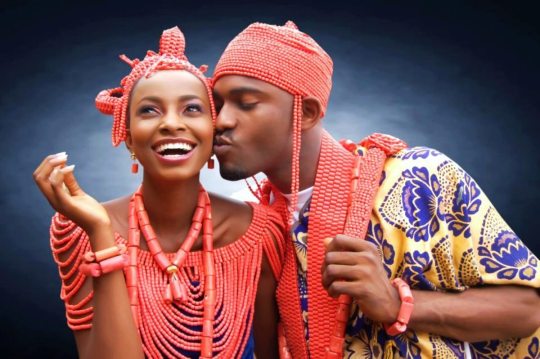
Traditional Igbo marriage clothing. The Igbo had queer marriages before colonialisation (marriages between women), but the clothes depicted in the photo are not specifically for queer people.
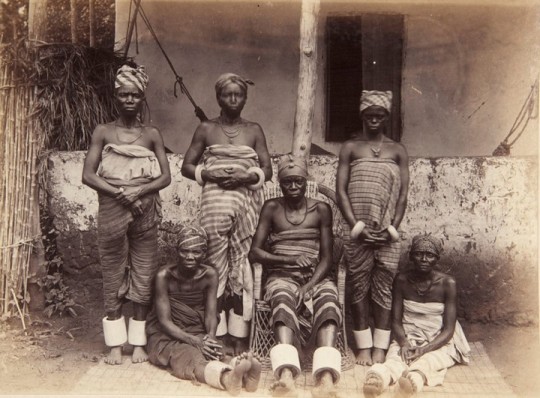
Other Igbo fashion, this time women before during colonialism time.
Angola:

Queen Mzinga Mbande of Angola, who not just was a tactically brilliant ruler who defended her country from colonizers for a long time, but also had several female lovers.

Mbundu women, who are the same ethnicity as Queen Mbande
Mali:

The Dogon in Mali have several spirits and gods who have characteristics of several genders. The person in the picture is performing one of their ceremonies.
South Africa:

A Zulu and a Tswana man were the first gay South Africans to be wedded in 2013 in a traditional ceremony. The man in the photo is neither of them, however he does show the traditional Zulu wedding clothes.
(These are these two men, if you curious. Their names are Tshepo Modisane and Thoba Sithole:)

4 notes
·
View notes
Text
Underground Railroad: a gay slave rides a real railroad in the surrealist South
The Underground Railroad was a network of safe houses and allies that helped enslaved African-Americans escape to the North, or after the Fugitive Slave Act, to Canada.

The 2023 tv miniseries suggests that it was a real railroad, a series of trains and tunnels run by an intricate bureaucracy. As Cora and her friends and love interests head north, pursued by slave-catcher Arnold Ridgeway, they encounter bizarre communities and have adventures that comment on the racism in the pre-Civil War South and the contemporary U.S. I reviewed Chapter 1, "Georgia."
Scene 1: Surreal montage of people running backwards, falling into a chasm, being all bloody, and finally Cora telling us: "The first and last thing my mama gave me was apologies." Cut to Caesar (Aaron Pierre, left) asking Cora to head north with him, for "good luck." She refuses. The way they keep pushing their heads at each other, they appear to be a romantic couple.
Scene 2: Whooping and dancing in the slave compound. Cora brings the older Jockey some food. Their owners appear: Terrence (Benjamin Walker, left), who runs the other half of the plantation, disapproves of the "lenient" way that James treats his slaves. So they ask a kid to recite the Declaration of Independence. They mean the Declaration of Secession, so the Civil War is on. How is anyone heading North? He can't do it right, and he accidentally touches them, so Terrence has him beaten to death. And Cora, for intervening. They are left chained to the whipping post all night.
Scene 3: In the morning, the ladies tend to Cora's wounds, and Caesar takes her home. Later, his wife Frances says "I know about men like you. You sneak off in the night and roll around in the swamp with other mens on your back." Ok, so Caesar is gay. She's fine with it, but master brought them together to reproduce, and if they don't, Master Randall will cut off his dick, so get with your husbandly duties!
Scene 4: Prideful (Lucius Baston), the black overseer, tells Cora that she's being moved. She resists (I can't imagine why -- her new owner can't be much worse).
Cut to James walking through the woods. He's nice to a little boy named Hezekiah then coughs and collapses.
Cut to Terrence in the fields, telling the slaves that his brother James has died, so now he owns the whole plantation, and will stop being "lenient": no more parties, no more outside work, and he'll be overseeing the "breeding," Perv just wants to watch couples doing it. He also wants to have sex with Cora.
Scene 5: Slave catcher Ridgeway (Joel Edgerton, left and below and his assistant, a young black kid named Homer (Chase W. Dillon), have a very muscular escaped slave, Big Anthony (Elijah Everett), in a cage. They return him to Terrence's plantation.
Ridgeway advises Terrence to place some moles in the fields to rat out talk of escape. An underground railroad has appeared to abet runaways. Terrence doesn't believe it, but Ridgeway asks him why some escaped slaves disappear forever, as if they've gone to a new world. An alternative reality with no slave trade?
The full review, with nude frontal and rear photos, is on Righteous Gemstones Beefcake and Boyfriends
5 notes
·
View notes
Text
Reebok x Nao Serati Collection

Reebok and South African athleisure brand Nao Serati unveil a footwear and apparel collection in celebration of South African Pride Month. Nao Serati was founded by designer Neo Serati Mofammere in 2014 to create garments that explore the margins of gender, art and sexuality, all while staying true to Neo’s South African heritage. This collection draws inspiration from Neo’s bold, fun design style and his life as a queer person in South Africa as well as Reebok’s intention to inspire human movement for all.
To bring these concepts to life Neo worked with the Reebok team to create apparel that considers people of different sizes, shapes and gender identities. All apparel is available in non- binary sizing and was fit and wear tested by individuals from a variety of gender identities and sizes. The line features a range of tops and bottoms including the Woven Short ($50), Oversized Tee ($35) and adjustable Graphic Tank ($30).
Paired with the apparel is a footwear collection that includes some of Reebok’s most iconic lifestyle and fitness footwear models including the Nano X2 ($150), Classic Slide ($40), Club C ($100) and Classic Leather ($100) to ensure there is a silhouette for everyone. Each shoe incorporates a woven Reebok x Nao Serati badge on the tongue that includes all eleven colors of the Progress Pride Flag.
In further celebration of the collection and the LGBTQIA+ community in South Africa, Nao Serati will be hosting a fashion showcase outside of Johannesburg on October 13th. Guests will be
invited to enjoy food, drinks and music, see the capsule and learn more about the inspiration behind each design from Neo. Following the show will be an exclusive after party to celebrate the partnership.
The Reebok x Nao Serati collection will be available on Reebok.com/nao_serati beginning October 7th.

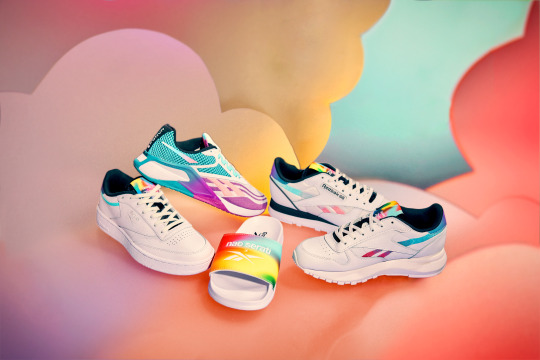












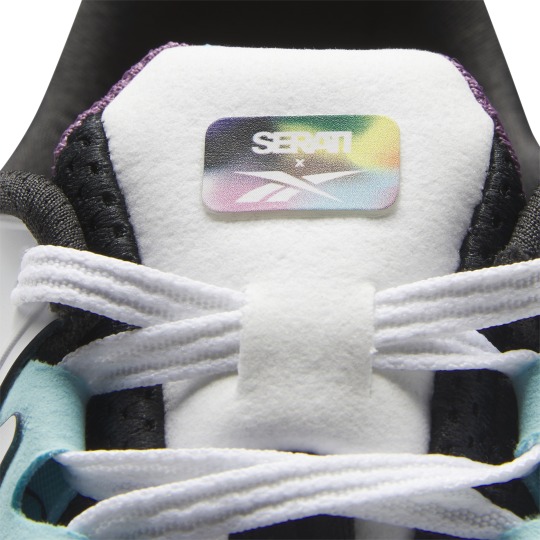



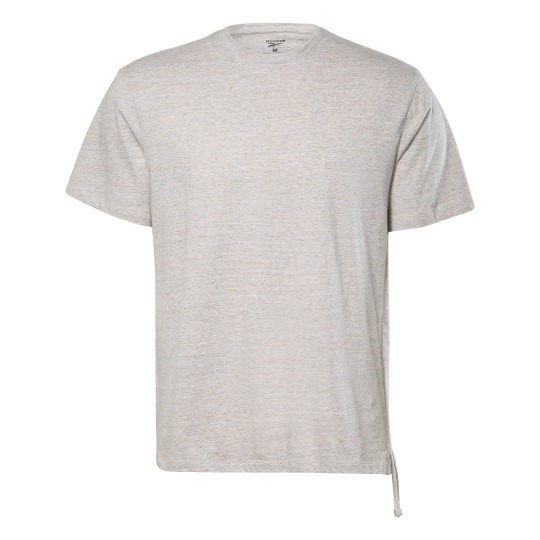
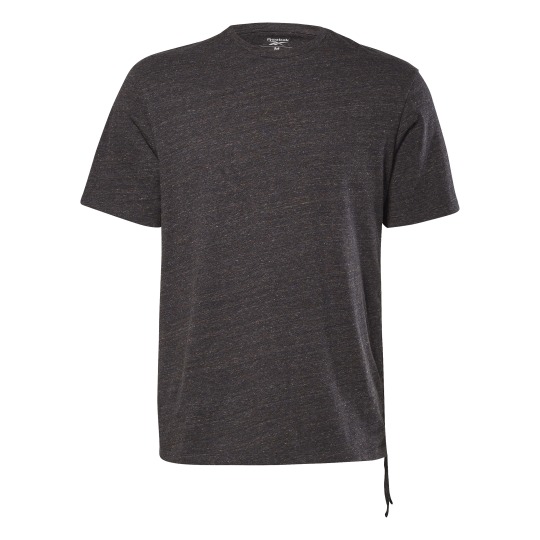


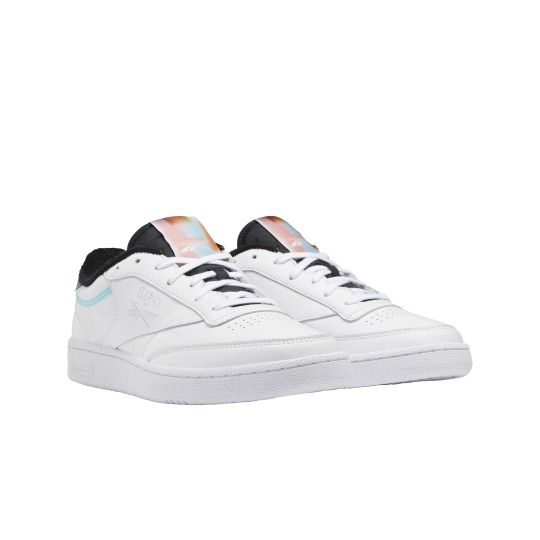

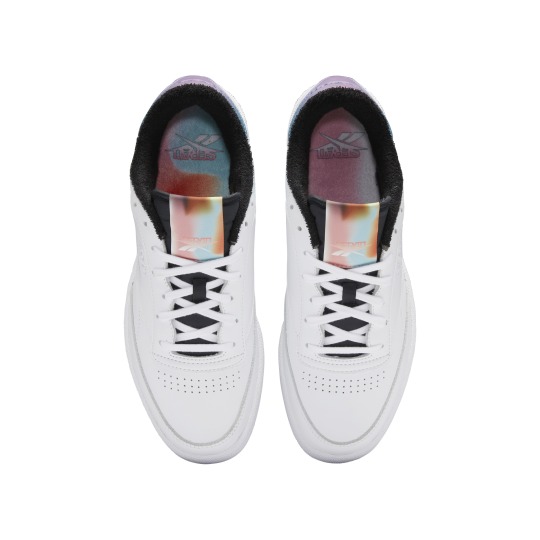

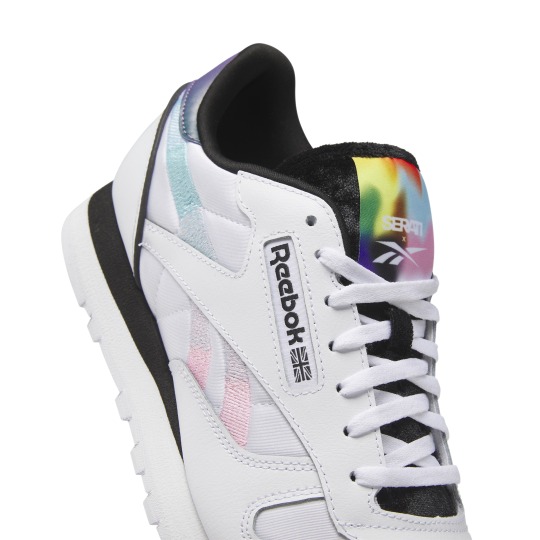
2 notes
·
View notes
Text
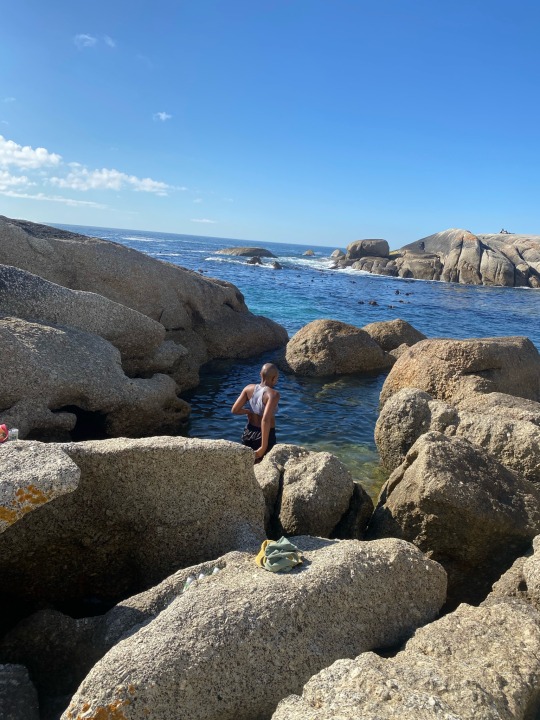

beyond grateful to have gotten to spend the day with them 🥹💛
#cape town#bakoven beach#beach#summer fun#summer#friends#lovers#summer love#ketsia velaphi#aesthetics#queer art#lgbt#beautiful#queer south africa#south africa#black queer south africa#black queer youth#lgbtqia#non binary#south african queer pride#south african queer youth#black is beautiful
2 notes
·
View notes
Photo

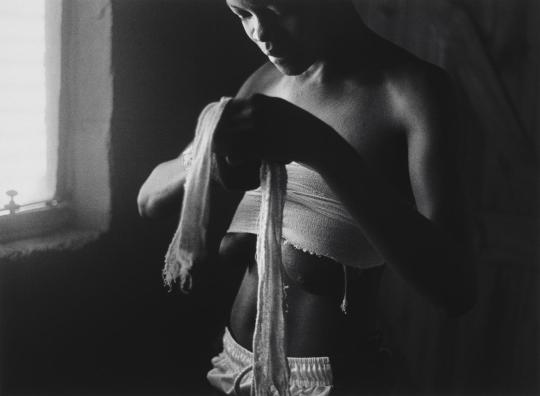
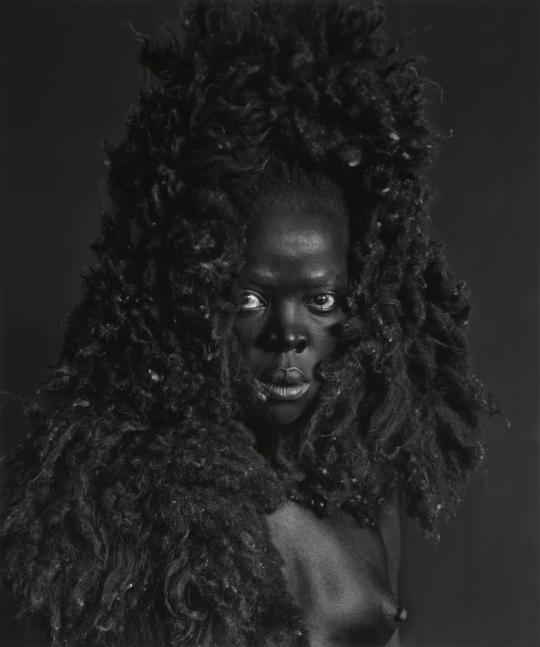
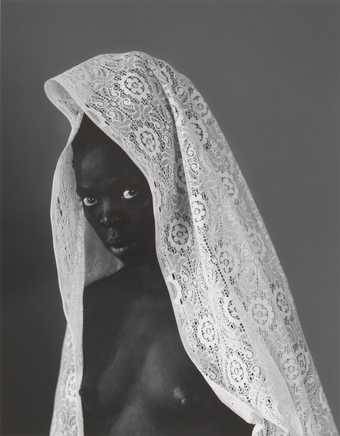
Queer artists 07/30 - Zanele Muholi
Zanele Muholi is a South African photographer and self-described visual activist. Of their identity, Zanele says, “I identify as a human being at this stage because of gender fluidity, and to avoid being confused by what the society expects out of us. I came out as a same-gender loving person, but because there was no Zulu name for it, I was called a lesbian. But we move on, transpire, transgress, and transform in many ways; so I’m just human.”
Their work explores the experiences of Black queer communities in South Africa, both celebrating love, strength and empowerment and documenting the ongoing realities of violence and prejudice. The participants, as Zanele prefers to call them rather than subjects, often look straight at the camera, meeting the gaze of the viewer. In other photographs, their faces are partly or entirely out of frame, maintaining their privacy. Zanele's work includes an ongoing series of 365 self-portraits entitled Somnyama Ngonyama, or Hail the Dark Lioness, which they describe as "an unflinchingly personal approach I have taken as a visual activist to confronting the politics of race and pigment in the photographic archive."
Zanele says about their work, "I have seen people speaking and capturing images of lesbians on our behalf, as if we are incapable and mute. I have witnessed this at Gay Pride events, at academic conferences, in the so-called women’s movement forums. Research opened my eyes even wider than the lens, and it made me feel autonomous. I refused to become subject matter for others and to be silenced.’
[Image descriptions:
Top left: Ordeal (2003) is a black-and-white photo depicting a dark-skinned person kneeling and wringing out a cloth into an enamel bowl. Only their lower legs and arms are visible.
Top right: ID Crisis (2003) is a black-and-white photo depicting a dark-skinned person binding their breasts with bandages. They stand in a shadowy room with light streaming in the window opposite them.
Bottom left: Somnyama IV, Oslo (2015) is a black-and-white self-portrait of Zanele, a slim, dark-skinned person. They are depicted bare-chested from the chest up, looking directly at the viewer, their face framed with dark hair.
Bottom right: Thembeka I, New York, Upstate (2015) is a black-and-white self-portrait of Zanele, a slim, dark-skinned person. They are depicted bare-chested from the chest up, looking directly at the viewer, their head and arms covered with a long, white, lacy veil.]
243 notes
·
View notes
Text
Stories without Heroes
Reading "The Carrier Bag Theory of Fiction" by Ursula K. Le Guin, I had quite an enlightenment. In short, Le Guin puts forward a theory in which the central part of a story doesn't concern a hero that often recurs to violence to accomplish something and be considered a saviour. A killer story. Now the story becomes a carrier, a bag holding meanings. No heroism is involved because being human doesn't mean being a hero: it's about relationships, what we do and feel, and how we relate to each other. To be human, you no longer have to feel like you want to be a killer.
Since I was little, my mind completely missed the aggressive part of what being a "man" seemed to mean in the culture I was living in. It was always about the hero, which when I was a child meant being a soccer player or an actor, and often the actor played roles where he was "cool and badass". I wasn't like that, but for years I wanted to: I even dreamt about being a hero, saving and being loved by girls. The whole package. I liked what I wasn't cause I wanted to feel accepted by others and myself.
Now, in retrospect, it makes sense that I consider myself non-binary: I don't fit into the gender role of a man. Being born as one, though, estranged me from my peers. This hero perspective, the fact that you have to be aggressive to be human, not only involves women but everyone who doesn't fit into a specific "man" category. The "Carrier Bag Theory of Fiction" could relieve a lot of people, which often are the ones already with problems about their identity or not being treated equally by society.
We should change the meaning of what a story is because our lives, dreams, and hopes are based on them. Making them more inclusive makes our world more inclusive, and we should aim at that.
Edit: I've watched a couple of youtube videos on the manosphere*, and they introduced many concepts around man's role in our society that intersect interestingly with this post. A significant factor that F.D Signifier, the author of those videos, points out is the presence of a certain kind of cultural hegemony in the world that we live in: hegemonic masculinity. Coined by Raewyn Connel in 1987, the term describes "a set of values, established by men in power that functions to include and exclude, and to organize society in gender unequal ways. It combines several features: a hierarchy of masculinities, differential access among men to power (over women and other men), and the interplay between men's identity, men's ideals, interactions, power, and patriarchy." [1] The values differ from culture to culture, but I think that, through globalization, the hero that Le Guin talks about is a product of this hegemony. What I didn't have, and these heroes had, are the values of masculinity, which are often enforced on female and queer protagonists.
To change the meaning of what a story is, we need to change the cultural hegemony surrounding it; we need to start by changing the masculine hegemony that has historically defined the hero.
*: to the lucky uninitiated, the manosphere is, as defined by Wikipedia, "a collection of websites, blogs, and online forums promoting (to varying degrees) masculinity, misogyny, and opposition to feminism." What makes it interesting is this cultural phenomenon's prevalence on the internet. For example, the Urban Dictionary defines it differently: "A group of websites made for men to discuss men's interests and issues without women nagging them." There are other definitions on the side of Wikipedia, but they have many dislikes. This proves the pride people in that community feel about themselves and their numbers online.
1: Jewkes R., Morrell R. Sexuality and the Limits of Agency among South African Teenage Women: Theorising Femininities and Their Connections to HIV Risk Practices. Social Science & Medicine. 2012.
3 notes
·
View notes
Text
Now that’s it’s pride month, I want to give a special shout-out to all my POC/ethnic minority queers.
Unfortunately LGBT representation in western media is still heavily whitewashed, and we rarely get to see our stories told. I want you all to know that your existence in the community is amazing deserves to be seen.
Black queers are valid. Latino queers are valid. Native American/Indigenous queers are valid. South Asian queers are valid. East Asian queers are valid. Middle Eastern queers are valid. North African queers are valid. And any other race I may have missed is extremely valid.
We are here, and we are just as important to this community as our white counterparts. And if you’re a white individual viewing this post, please remember how much queer people of color have done for our community, and remember to show support for every race this month—not just white gays.
2 notes
·
View notes
Text
Aussie Queer History in 40 secs: Noel Tovey
New Post has been published on https://qnews.com.au/aussie-queer-history-in-40-secs-noel-tovey/
Aussie Queer History in 40 secs: Noel Tovey
Aboriginal street kid Noel Tovey became one of Australia’s most accomplished dancers.
Watch in 40 secs ↓
Read More ↓↓
Links ↓↓↓
Born into poverty, Noel Tovey suffered sexual abuse and neglect throughout his childhood.
After working as a rentboy, he served a term of imprisonment in Pentridge Gaol for the ‘abominable crime of buggery’.
Noel took dancing lessons and moved to London in 1960. He became an internationally renowned dancer and and acclaimed choreographer.
He returned to Australia in 1991 where his accomplishments include serving as artistic director for the indigenous welcoming ceremony at the Sydney 2000 Olympics.
Watch
View this post on Instagram
A post shared by QNews (@qnewsmag)
Activism
In addition to his trailblazing work in dance and theatre, Noel Tovey was a pioneering activist. He protested against Indigenous and LGBTQIA+ injustice but also against the Vietnam War and South African apartheid.
One of the first marchers at London Pride, he was also present at New York’s Stonewall Riot.
Noel says that he grew to understand and accept his sexuality despite the repeated sexual abuse he endured as a child.
“People used to say to me, ‘When did you come out of the closet?’ and I’d say, “I didn’t – we were too poor to have a closet!”
Links
Read More: Noel Tovey, Indigenous ballet dancer to Stonewall rioter.
More Quick Aussie History:
Dr Lilian Cooper.
Earl Beauchamp, William Lygon.
Marie Bjelke Petersen.
For the latest LGBTIQA+ Sister Girl and Brother Boy news, entertainment, community stories in Australia, visit qnews.com.au. Check out our latest magazines or find us on Facebook, Twitter, Instagram and YouTube.
0 notes